Eyes Without a Face
8.8 /10 1 Votes
98% Rotten Tomatoes 90% Metacritic Genre Drama, Horror, Thriller Duration Language French | 7.8/10 IMDb 3.5/4 Roger Ebert Director Georges Franju Music director Maurice Jarre Country France
Italy | |||||||||||||||||||||||||||||||||
 | ||||||||||||||||||||||||||||||||||
Release date 2 March 1960 (1960-03-02) (France) Based on Les yeux sans visage
by Jean Redon Writer Jean Redon (novel), Pierre Boileau (adaptation), Thomas Narcejac (adaptation), Jean Redon (adaptation), Claude Sautet (adaptation), Pierre Gascar (dialogue) Initial DVD release November 21, 2002 (France) Cast Pierre Brasseur (Doctor Génessier), Alida Valli (Louise), Édith Scob (Christiane Génessier), François Guérin (Jacques Vernon), Juliette Mayniel (Edna Gruber), Alexandre Rignault (Inspector Parot)Similar movies Salt , The Big Sleep , Independence Day , The Lady from Shanghai , Detour , Notorious | ||||||||||||||||||||||||||||||||||
Eyes without a face 1960 trailer
Eyes Without a Face (French: Les yeux sans visage) is a 1960 horror film adaptation of Jean Redon's novel, directed by Georges Franju, and starring Pierre Brasseur and Alida Valli. During the film's production, consideration was given to the standards of European censors by setting the right tone, minimizing gore and eliminating the mad-scientist character. Although the film passed through the European censors, the film's release in Europe caused controversy nevertheless. Critical reaction ranged from praise to disgust.
Contents
- Eyes without a face 1960 trailer
- Eyes without a face welcome to the basement
- Plot summary
- Cast
- Production
- Release
- Home media
- Reception
- Soundtrack
- Legacy
- References
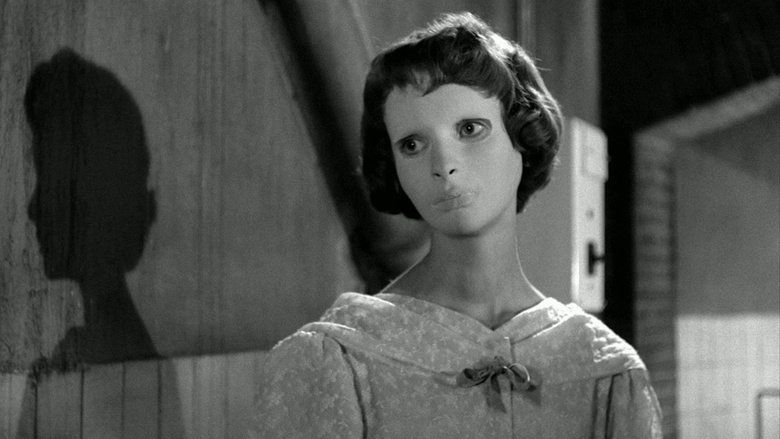
The film received an American debut in an edited and dubbed form in 1962 under the title of The Horror Chamber of Dr. Faustus. In the United States, Faustus was released as a double feature with The Manster (1959). The film's initial critical reception was not overtly positive, but subsequent theatrical and home video re-releases increased its reputation. Modern critics praise the film today for its poetic nature as well as being a notable influence on other filmmakers.
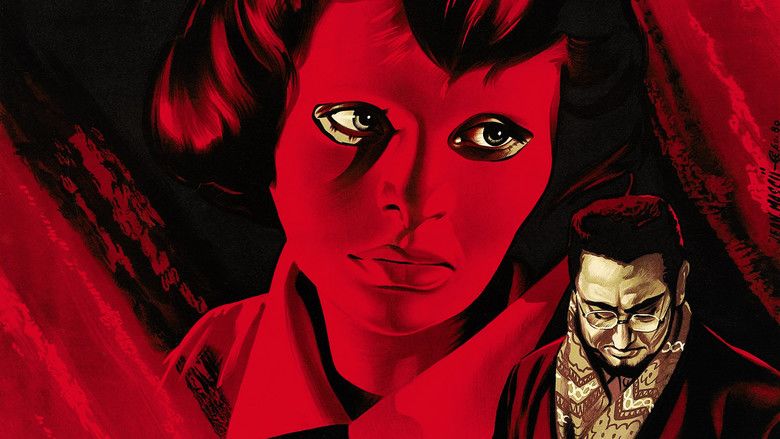
Eyes without a face welcome to the basement
Plot summary

At night just outside Paris, a woman drives along a riverbank and dumps a corpse in the river. After the body is recovered, Dr. Génessier identifies the remains as those of his missing daughter, Christiane Génessier, whose face was horribly disfigured in an automobile accident that occurred before her disappearance, for which her father was responsible. Dr. Génessier lives in a large mansion, which is adjacent to his clinic, with numerous caged German Shepherds and other large dogs.

Following Christiane's funeral, Dr. Génessier and his assistant Louise, the woman who had disposed of the dead body earlier, return home where the real Christiane is hidden (it is explained that Louise is deathlessly loyal to Génessier because he repaired her own badly damaged face, leaving only a barely noticeable scar she covers with a pearl choker). The body belonged to a young woman who died following Dr. Génessier's unsuccessful attempt to graft her face onto his daughter's. Dr. Génessier promises to restore Christiane's face and insists that she wear a mask to cover her disfigurement. After her father leaves the room, Christiane calls her fiancé Jacques Vernon, who works with Dr. Génessier at his clinic, but hangs up without saying a word.
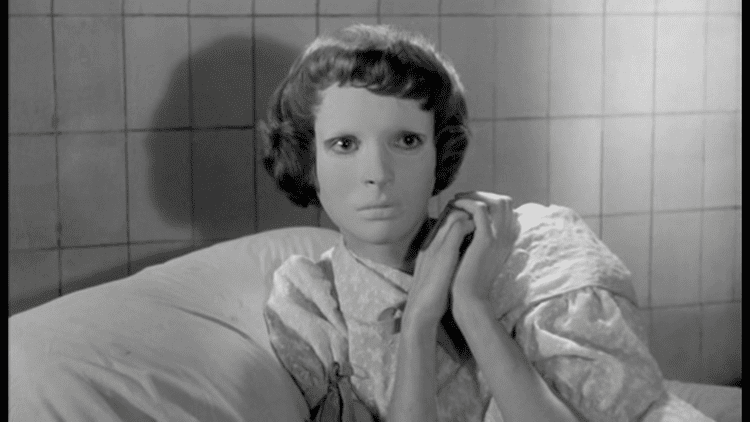
Louise lures a young Swiss girl named Edna Grüber to Génessier's home. Génessier chloroforms Edna and takes her to his secret laboratory. Christiane secretly watches her father and Louise carry Edna to the lab, and then goes to tenderly caress the dogs her father keeps caged, who eagerly accept her love, and are unaffected by her appearance.
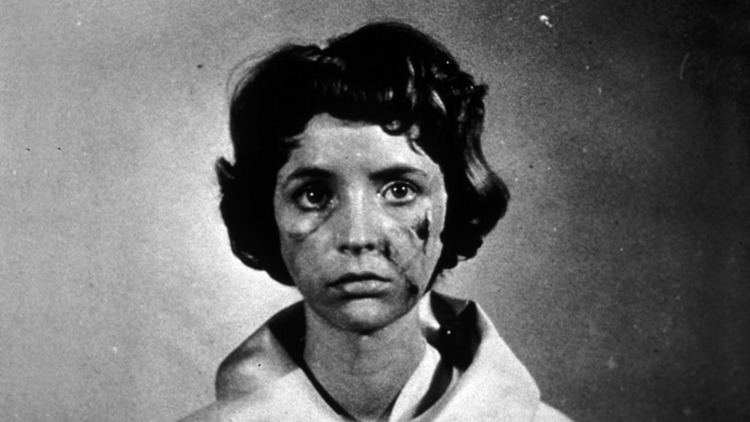
Dr. Génessier performs heterograft surgery, removing Edna's face. The doctor successfully grafts the skin onto his daughter's face and holds the heavily bandaged and faceless Edna against her will. Edna escapes, but falls to her death from an upstairs window. After disposing of Edna's corpse, Génessier notices flaws on Christiane's face. Her face grows worse within days; the new tissue is being rejected and she must resort to wearing her mask again. Christiane again phones Jacques and this time says his name, but the phone call is interrupted by Louise.
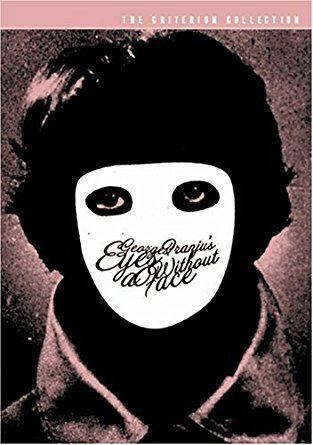
Jacques reports the call to the police, who have been investigating the disappearance of several young women with blue eyes and similar facial characteristics. The police have gained a lead concerning a woman who wears a pearl choker, whom Jacques recognizes as Louise. Inspector Parot, an officer investigating Edna's disappearance, coerces a young woman named Paulette Mérodon (recently arrested for shoplifting) to help investigate by checking herself into Génessier's clinic. After being declared healthy, Paulette leaves for Paris and is promptly picked up by Louise, who delivers her to Dr. Génessier. Génessier is about to begin surgery on Paulette when Louise informs him that the police want to see him.
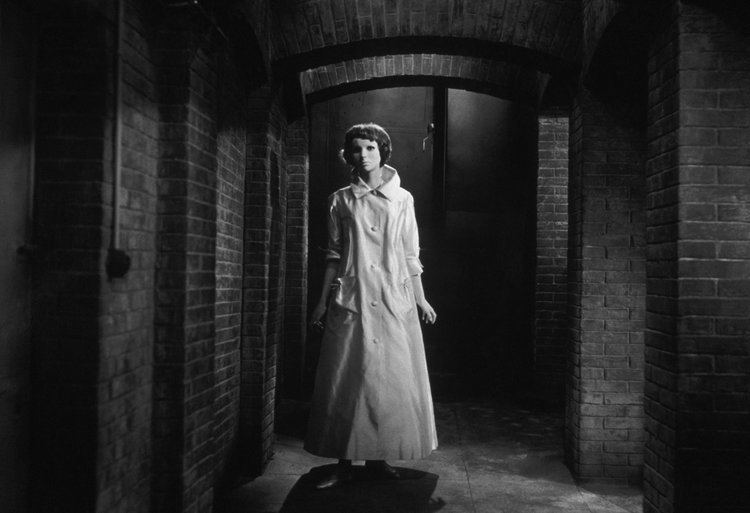
While the doctor talks with the police, Christiane, who has long been disenchanted with her father's experiments, and has been slowly losing her sanity from guilt and isolation, frees Paulette and stabs Louise in the neck. She also frees the dogs and doves that her father uses for experiments. Dr. Génessier dismisses the police (who readily accept his explanations) and returns to his lab, where an abandoned German Shepherd he'd only recently obtained for his experiments attacks him, inciting the other dogs to follow suit—maddened by pain and confinement, they maul him to death, disfiguring his face in the process. Christiane, unmoved by her father's death, walks slowly into the woods outside Génessier's house with one of the freed doves on her hand.
Cast
Production
In the late 1950s, British horror films such as The Curse of Frankenstein (1957) and Horror of Dracula (1958) were popular with French filmgoers. At the time, similar modern horror films had not been attempted by French film makers until producer Jules Borkon decided to tap into the horror market. Borkon bought the rights to the Redon novel and offered the directorial role to one of the founders of Cinémathèque Française, Franju, who was directing his first non-documentary feature La Tête contre les murs (1958). Franju had grown up during the French silent-film era when filmmakers such as Georges Méliès and Louis Feuillade were making fantastique-themed films, and he relished the opportunity to contribute to the genre. Franju felt the story was not a horror film; rather, he described his vision of the film as one of "anguish... it's a quieter mood than horror... more internal, more penetrating. It's horror in homeopathic doses."
To avoid problems with European censors, Borkon cautioned Franju not to include too much blood (which would upset French censors), refrain from showing animals getting tortured (which would upset English censors) and leave out mad-scientist characters (which would upset German censors). All three of these were part of the novel, presenting a challenge to find the right tone for presenting these story elements in the film. First, working with Claude Sautet who was also serving as first assistant director and who laid out the preliminary screenplay, Franju hired the writing team of Boileau-Narcejac (Pierre Boileau and Thomas Narcejac) who had written novels adapted as Henri-Georges Clouzot's Les Diaboliques (1955) and Alfred Hitchcock's Vertigo (1958). The writers shifted the novel's focus from Doctor Génessier's character to that of his daughter, Christiane; this shift revealed the doctor's character in a more positive and understandable light and helped to avoid the censorship restrictions.
For his production staff, Franju enlisted people with whom he had previously worked on earlier projects. Cinematographer Eugen Schüfftan, best remembered for developing the Schüfftan process, was chosen to render the visuals of the film. Schüfftan had worked with Franju on La Tête Contre les Murs (1958). Film historian David Kalat called Shüfftan "the ideal choice to illustrate Franju's nightmares". (Only two years later, Shüfftan won an Academy Award for Best Cinematography, Black-and-White for his work on The Hustler (1961).) French composer Maurice Jarre created the haunting score for the film. Jarre had also previously worked with Franju on his film La Tête Contre les Murs (1958). Modern critics note the film's two imposing musical themes, a jaunty carnival-esque waltz (featured while Louise picks up young women for Doctor Génessier) and a lighter, sadder piece for Christiane. Jarre subsequently wrote the music score Lawrence of Arabia (1962) and Doctor Zhivago (1965) among other films.
Release
Eyes without a Face completed filming in 1959, and had its debut in Paris on March 2, 1960. Although it passed through the European censors, the film caused controversy on its release in Europe. The French news magazine L'Express noted the audience "dropped like flies" during the heterografting scene. During the film's showing at the 1960 Edinburgh Film Festival, seven audience members fainted, to which director Franju responded, "Now I know why Scotsmen wear skirts."
For the American release in 1962, the film was cut. It was given an English-language dub, and re-titled The Horror Chamber of Dr. Faustus. Edits in the Dr. Faustus version removed parts of the heterografting scene as well as scenes showing Doctor Génessier's more human side such his loving care for a small child at his clinic. The distributors recognized the artistic merit of the film and played up that element in promotion with an advertisement quoting the London Observer's positive statements about the film and noting its showing at the Edinburgh Film Festival. This is in contrast to presentation of the secondary feature, The Manster (1962), which mainly focused on the carnie-show aspect with its "two-headed monster" and "Invasion from outer space by two-headed creature killer". Eyes Without a Face had a very limited initial run and there was little reception from the American mainstream press.
Eyes Without a Face received its second large theatrical release in a September 1986 re-release in conjunction with retrospectives at the National Film Theatre in London and at film archive Cinémathèque Française for its 50th anniversary in France. As a founder of Cinémathèque Française, the archive celebrated Franju by presenting the director's back catalogue. The film was re-released in its original form to American theatres on October 31, 2003 under its original running time and title.
Home media
Eyes Without a Face was released on VHS on January 9, 2001 by Kino Video and on DVD on October 19, 2004 by The Criterion Collection. The DVD also contains Georges Franju's first documentary Blood of the Beasts (1949), a depiction of a French slaughterhouse. A Region 2 release of Eyes Without a Face was released April 21, 2008 by Second Sight Films. A Region 4 edition of the film was released on July 2, 2007 by Umbrella Entertainment. The disc also included Franju's documentary Blood of the Beasts. In 2013, The Criterion Collection released the film on Blu-ray, this time transferred directly from the camera negative.
Reception
On the film's initial release, the French critics' general response was moderate, ranging from mild enthusiasm to general disdain or disappointment, claiming it to be either a repetition of German expressionism or simply a disappointment of the director's leap from documentary filmmaker to a genre film-maker claiming the film to be in a "minor genre, quite unworthy of his abilities". Franju responded to these comments claiming the film was his attempt to get the minor genre to be taken seriously. In England, Isabel Quigly, film critic for The Spectator, called it "the sickest film since I started film criticism", while a reviewer who admitted that she liked the film was nearly fired. A review in Variety was negative, noting specifically that the "stilted acting, asides to explain characters and motivations, and a repetition of effects lose the initial impact" and an "unclear progression and plodding direction give [the film] an old-fashioned air". The Monthly Film Bulletin opined that "when a director as distinguished as Georges Franju makes a horror film...one cannot but feel tempted to search for symbols, an allegory, layers, or interpretation. Unhappily there is practically nothing in this inept work to offer any encouragement for doing so." The review noted "a strange and poetic opening" and that Schuftan's "haunting camerawork allies itself perfectly to Maurice Jarre's obsessive score" while" Brasseur and Valli were "sadly wasted" and that they "do what they can with almost non-existent characters"
With the September 1986 re-release of the film, in conjunction with retrospectives at the National Film Theatre in London and at the Cinémathèque Française in France of the director's back catalogue, the film's critical status began to be re-evaluated. French critics' response to the film was much more positive than it was on its original release, with former editor-in-chief of Cahiers du cinéma Serge Daney calling the film "a marvel". The film was re-released in its original form to American theatres on October 31, 2003 and received great critical acclaim. Based on 35 reviews collected by Rotten Tomatoes, Eyes Without a Face received an average 97% fresh rating with an average rating of 8.1/10. The reviewers commented on the film's poetic nature and noted the strong influence of French poet and filmmaker Jean Cocteau. Jonathan Rosenbaum of the Chicago Reader praised the film, referring to it as "absurd and as beautiful as a fairy tale". J. Hoberman of The Village Voice declared the film "a masterpiece of poetic horror and tactful, tactile brutality". The Encyclopedia of Horror Films noted the Cocteau influence, stating that "Franju invests [the film] with a weird poetry in which the influence of Cocteau is unmistakable". David Edelstein of Slate also compared the film to Cocteau's work, commenting that "the storyline is your standard obsessed-mad-doctor saga, one step above a Poverty Row Bela Lugosi feature ... [b]ut it's Lugosi by way of Cocteau and Ionesco". In the early 2010s, Time Out conducted a poll with several authors, directors, actors and critics who have worked within the horror genre to vote for their top horror films. Eyes Without a Face placed at number 34 on their top 100 list.
Soundtrack
Long after the film's original release, in February 2005, the French soundtrack record label Play Time released the soundtrack on Compact Disc along with other soundtracks performed by Jarre. This also includes soundtracks from other Franju films including La Tête contre les Murs and Thérèse Desqueyroux.
All music composed by Maurice Jarre.
Legacy
The film has influenced a number of European films since its release. Spanish director Jesús Franco created films throughout his career that were influenced by the film. Franco's first was the Spanish and French co-production of Gritos en la noche (1962). Franco's variation of the film concerns the efforts of a mad surgeon, Dr. Orloff, to reconstruct the face of his disfigured daughter Melissa. Inspector Edgar Tanner investigates Orlof using his girlfriend, Wanda Bronsky, as an undercover spy. Franco followed with several sequels to Gritos en la noche. He made one more film strongly influenced by the Franju film, Faceless (1988). Faceless has a similar plot involving beautiful women who are abducted by Dr. Flamand's (Helmut Berger) female assistant and kept hostage. The doctor uses the skin of the women to perform plastic surgery on his disfigured sister, but the experiments leave the victims mutilated and dead. The Italian film Atom Age Vampire (1961) was also influenced by Eyes Without a Face with a doctor attempting to take the faces of other women to repair his daughter's face. These homages are seen in the plot line of a police lieutenant who is investigating the circumstances behind the death of a young girl whose body has scars around the eyes. The lieutenant's investigation eventually leads him to a plastic surgery clinic, a similar plot motivation to Eyes Without a Face. The British film Corruption (1968), starring Peter Cushing adds a variation to the theme: a surgeon tries to restore his fiancée's beauty by repeatedly treating her with fluids extracted from the pituitary glands of murdered female victims. Spanish director Pedro Almodóvar has stated his 2011 film The Skin I Live In, which features a mad scientist who performs skin grafts and surgeries on an unwilling victim, was heavily influenced by Franju's Eyes without a Face.
The film also influenced American film productions: John Carpenter has suggested that the film inspired the idea of a featureless mask for the Michael Myers character in the slasher film series Halloween. Carpenter recalls that the film crew "didn't have any money to make a mask. It was originally written the way you see it, in other words, it's a pale mask with human features, almost featureless. I don't know why I wrote that down, why Debra [Hill] and I decided on that, maybe it was because of an old movie called Eyes Without a Face".
DVD film reviews have suggested the film influenced director John Woo; critics have compared the graphic detail of the face transplant scene in Woo's action film Face/Off (1997) to the face transplant scene in Eyes Without a Face and noted the similarity. Another resemblance is Woo's trademark use of white doves in his films that is similar to the character Christiane's dove-laden escape in the film's finale.
In 2001, on VH1 Storytellers, singer Billy Idol cited the film as giving him the idea for his song "Eyes Without a Face". The song, which has the film's original French title ("Les Yeux Sans Visage") as the recurring background chorus, takes the father-daughter relationship from the film and recasts it as the deteriorated relationship between the narrator and his lover. The song became Idol's first top-ten hit in the U.S.
References
Eyes Without a Face WikipediaEyes Without a Face IMDbEyes Without a Face Rotten TomatoesEyes Without a Face Roger EbertEyes Without a Face MetacriticEyes Without a Face themoviedb.org
